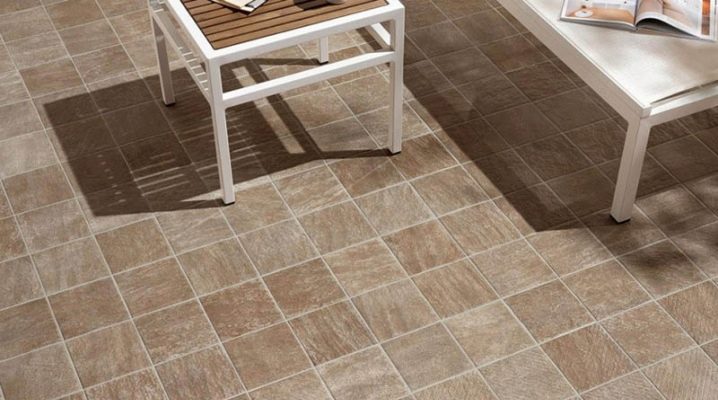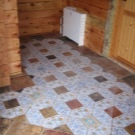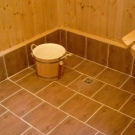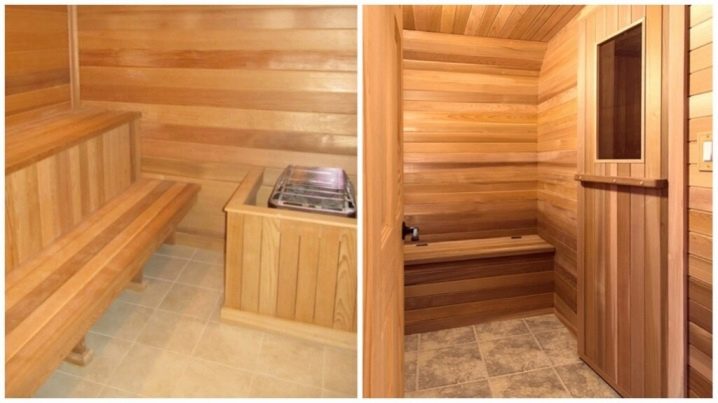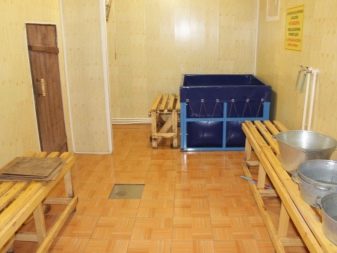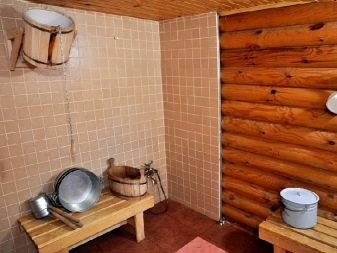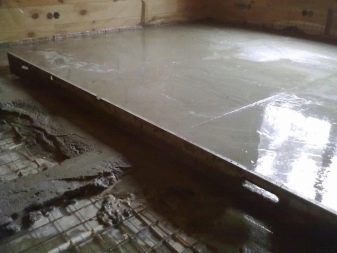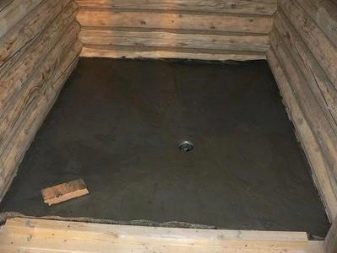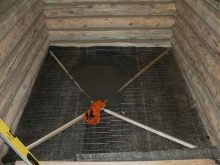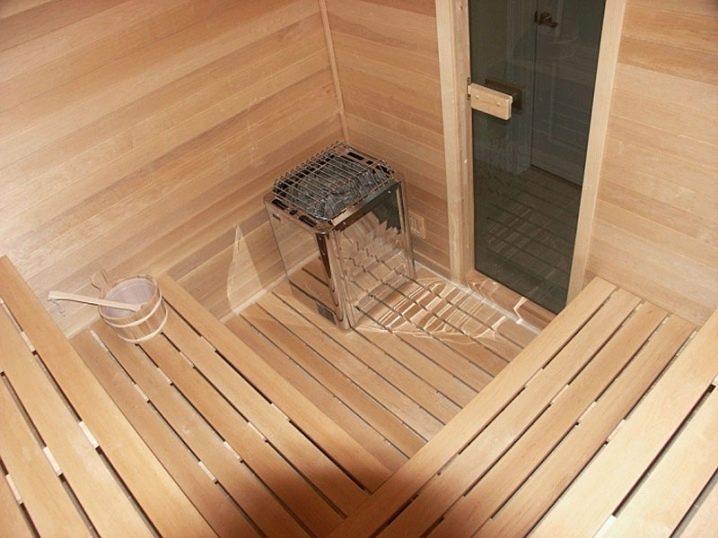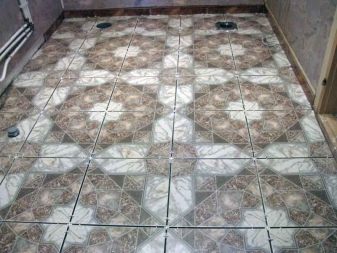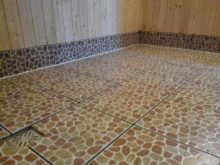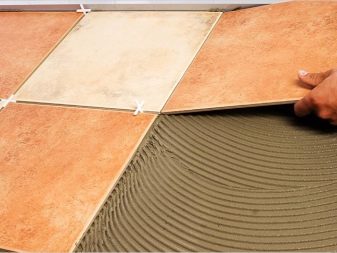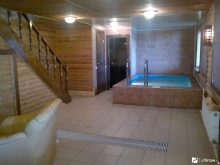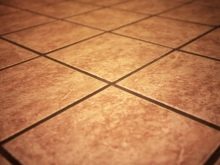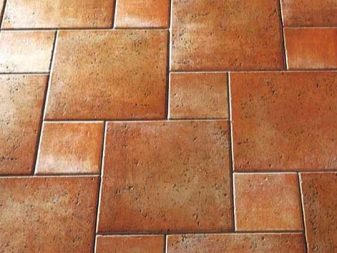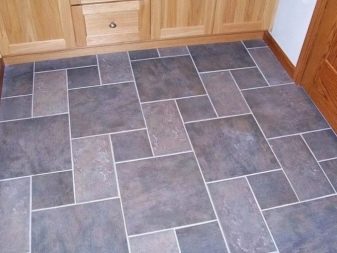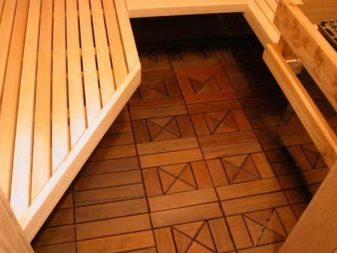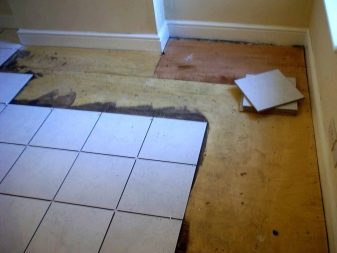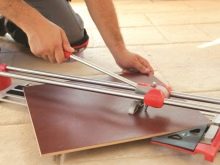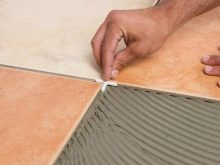Non-slip tile for the bath on the floor: the choice and tips on laying
Russian bath has a special atmosphere, because of great importance is the humidity of the air and changes in temperature conditions. The choice of facing materials is quite difficult. A great solution for creating flooring in the bath is a non-slip tile.
Ceramics is characterized by moisture resistance, excellently withstands high temperatures, and also is easy to clean. It is safe for human health, because it does not emit harmful substances when heated.
Floor features
A bath for a Russian person is always a rather extreme way of relaxation.
The floor in the steam room is affected by various factors of aggressive action:
- water constantly gets on a floor covering;
- not only steam but also its condensate is collected on the floor, so the surface is constantly wet;
- air temperature at the bottom of the room is about 40 to 45 degrees;
- strong mechanical effects.
If you choose a tile for the washing compartment, you should take into account that there are no high steam temperatures in this room, but high temperature water is pouring on the floor. It is therefore necessary to carefully approach the choice of building materials to create a durable and anti-slip coating.
Many people prefer tile, because this building material is characterized by water resistance, wear resistance and perfectly withstands high air temperatures.
Concrete
Concrete flooring is often found in the steam room or the washing compartment, since it is characterized by better qualities than a wooden floor. The composition of the concrete solution includes additives that positively affect the water resistance of the coating. It is reliably protected from rotting and perfectly resists high humidity.
Laying ceramic tiles in the bath can be carried out on a concrete floor. However, before you start creating a concrete base, you should pay attention to the creation of a drainage system, which is responsible for the drainage of water from the floor beyond the construction of the bath.
The construction of the drainage system should be carried out in the following order:
- it is necessary to make soil tamping;
- create a pillow of rubble or sand, you can use broken bricks. The cushion should be between 12 and 18 cm thick;
- pour the concrete layer, while its thickness should be from 5 to 7 cm;
- make a layer for insulation of felt, expanded clay or mineral wool;
- create a waterproofing using a thick film of polyethylene, or use roofing material;
- for the implementation of the reinforcement to use steel wire or mesh of high-quality metal;
- pour the next layer of concrete, the thickness of which should be from 10 to 15 cm, while forming a slope in the direction of the drain;
- cover the concrete floor with an adhesive based primer that will improve adhesion with ceramics.
When creating a floor of concrete, you must first consider where the drain hole will be located. This affects the location of the drainage system as a whole.
Wooden
The wooden floor is a classic option in the Russian bath, since traditionally the whole building is made of natural wood. The floor of the tree can be perfectly used for further laying of ceramic tiles, if you make the right preparation.
It is necessary to take into account that natural wood is an organic material, therefore it is not characterized by increased resistance to various factors. As you know, wood can swell in rooms with high humidity or shrink if there is not enough moisture in the air.
A new wooden floor usually has a tendency to subsidence for two years, and after this period can continue to move. Displacements are invisible to the eye, but this property adversely affects the strength of the floor surface. If on the floor of a tree to make laying tile, then it will soon begin to crack and peel off from the main floor.
To avoid such an unpleasant situation, to save your strength, time and money, you must create a damper layer before using tile.That he will allow to absorb the movement of natural wood. The damper should be laid in such a way that the elastic side is in contact with the wood, because it is she who will take the pushes, and the outer solid part can be used for laying tiles.
The damper layer must allow air to breathe. If this rule is broken, then mold and fungus will appear on the wooden floor, which will cause it to rot.
Tile requirements
To choose the right ceramic tile to create an anti-slip and sturdy flooring in the bath, It is necessary to pay attention to the requirements for the tile:
- To create an anti-slip effect, ceramics must have a corrugated surface. This option will prevent the possibility of falling and injury. The non-slip tile is ideal for all rooms in the bath, since the ingress of water on a smooth tile makes it very slippery.
- The back side should be characterized by low porosity. This option is the best to create a floor covering in the bath, because the lining will not absorb moisture, and tile will last for many years.
- An important criterion when choosing tile is durability and strength. It is better to give preference to the double-fired tile, which has a glazed surface. This option is characterized by increased durability.
- The choice of format tiles depends on the configuration of the slope of the floor. The harder it is, the smaller the tile should be used. This rule will simplify the process of laying ceramics. A good choice would be a ceramic mosaic, but it costs more than regular tile. The choice remains for each owner of the bath.
Lining selection
Many modern tile manufacturers offer collections for creating durable non-slip flooring for a bath or sauna. In order not to get lost in the proposed variety, but choose the right option for tile on the floor, should pay attention to a few points.
- Moisture absorption rate. It is better to purchase a tile with a minimum moisture absorption rate, since it will often come into contact with water. Porosity of tiles is an important indicator, because it affects the absorption of tiles.This criterion depends on the composition of the clay and the method of manufacture. The tile with markings AI and BI will be suitable for a floor covering in a bath. The letter “A” indicates that the tile was made using an extrusion method (the molding machine extrudes the pasty mass). The letter "B" means the pressing method (a press is used to form the tile).
You should also pay attention to the choice of glue, because it must be waterproof and reliable.
- Wear resistance. This indicator depends on the labeling. For the bath you need to purchase tiles with a high level of wear resistance.
- Quality. To determine the quality of the tile, you should carefully look at its appearance. It should have the correct shape and even angles. It is necessary to take two tiles and lay them face up to each other so that they fit tightly to each other, and the corners must match. This indicates the excellent quality of products.
- Design. When choosing a tile, an important role is played by the design, since the texture, color and print will help to decorate the room, create a cozy interior.
- Purpose Floor tiles must be resistant to mechanical stress,and withstand increased permeability.
Ceramics
Modern ceramics manufacturers offer a wide range of products. To make a quality and durable floor in the washroom or in other areas of the bath, You should pay attention to the following criteria:
- The surface of the ceramics should be such as to exclude the possibility of slipping, if you walk on it with bare, wet feet. It is worth choosing a tile rough or corrugated.
- Moisture absorption coefficient should be more than 10 percent. The most effective is ceramic granite with a ratio from 3.2 to 3.8 percent.
- The strength of the tiles should be at a high level. An excellent choice is keramoranite, since it is made using double firing technology.
- To create a floor in the bath is better to buy tiles of small size. An excellent format will be 10x10 cm. This will create the necessary slope for draining water.
Thermoplate
Heat-resistant tile is a common material for creating flooring in the bath, because the main feature is that it is able to withstand high temperatures and provides fire safety.
Heat-resistant tiles for use in the bath on the floor should be high-strength, environmentally friendly. It should provide good heat transfer and have a good indicator of heat resistance.
When choosing, you need to pay attention to the resistance to mechanical damage. It should have a low-porosity basis, since this option prevents its expansion at high temperatures. The thermoplate differs in the increased thickness if to compare it to analogs.
Decking modules
Decking models are in great demand today for creating durable and stylish flooring in the bath. Tiled modules allow you to create a moisture-resistant and hard flooring. In appearance, they resemble the floorboard.
For a bath, it is worth picking up decking-modules from durable tree species. They must be distinguished by a corrugated surface to eliminate the possibility of falling.
Styling tips
Experts recommend to adhere to some rules in order to properly make laying ceramics:
- Laying non-slip tiles can be done in different ways: diagonally, vzrabezhku or seam in the seam. It is suitable for concrete or wood floors.
- It is necessary to pre-paste baseboards, while using wall fixing.
- When laying ceramics should follow the slope, especially in the washing compartment. When calculating the slope is to use a ratio of 1: 100. It should be in the direction of the drain, so the water will not stand on the floor.
- In order to smoothly lay the tile, you need to use a batten or lacing. She will help to carry out visual control.
- When laying mastic or adhesive cement mortar should be applied to each tile.
- The surface of the floor must also be treated with adhesive mortar, and then leveled with a notched trowel. To create the necessary horizon, a building level and a rubber mallet are applied.
- After installation, remove excess glue with a spatula.
- To control the size of the connecting joints, you must use special crosses.
- Laying tiles on the floor requires the use of a seam. Its thickness can vary from 2 to 4 millimeters. Depending on the desired width of the seam, you need to choose the size of the crosses.
- Tiles can be trimmed using the tile cutter.Tiles that can be trimmed should be used in inconspicuous places.
On how to properly lay tile on the floor in the bath, see the following video.
